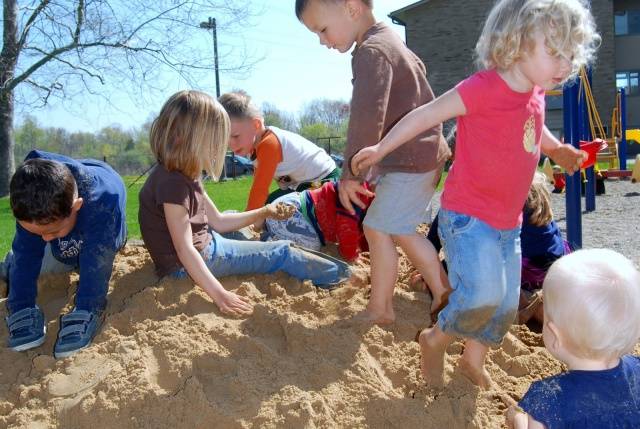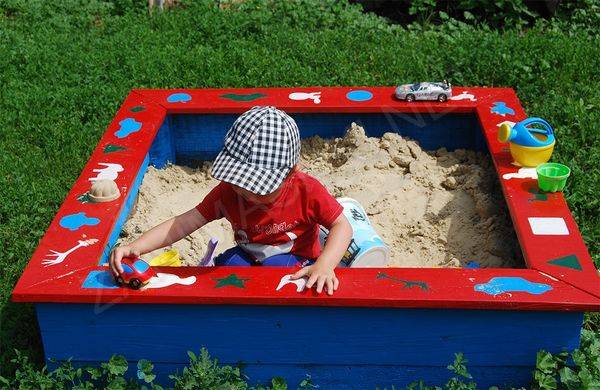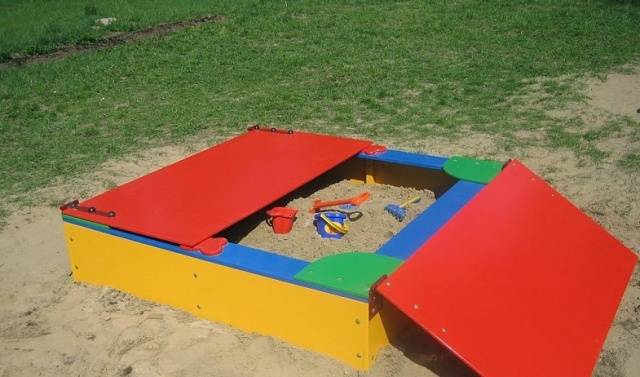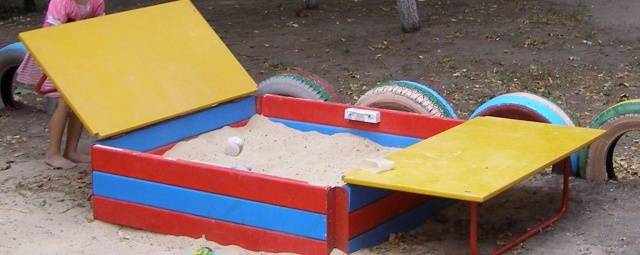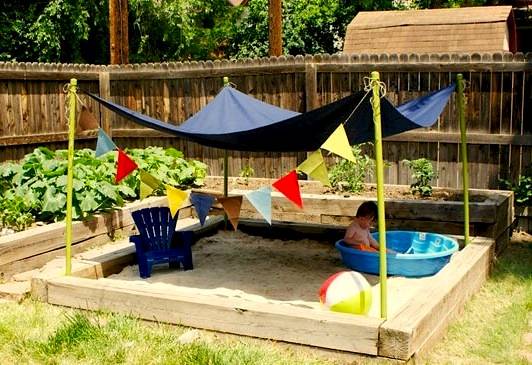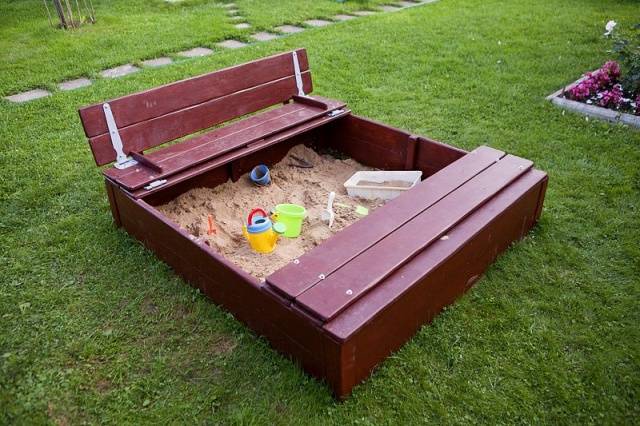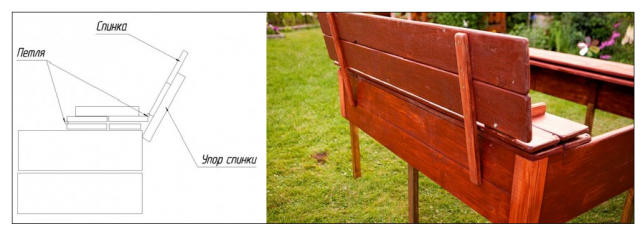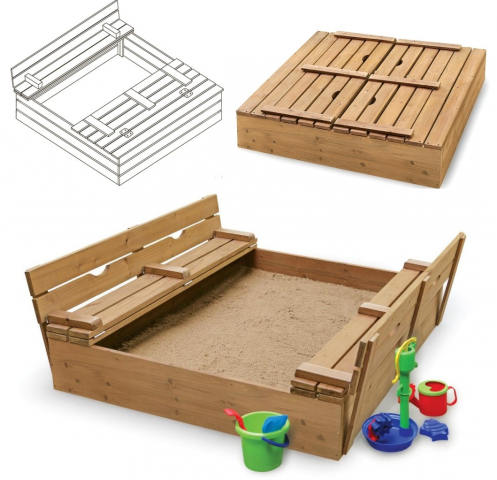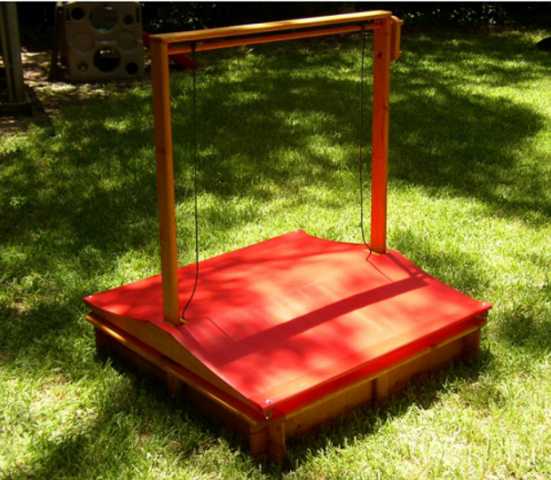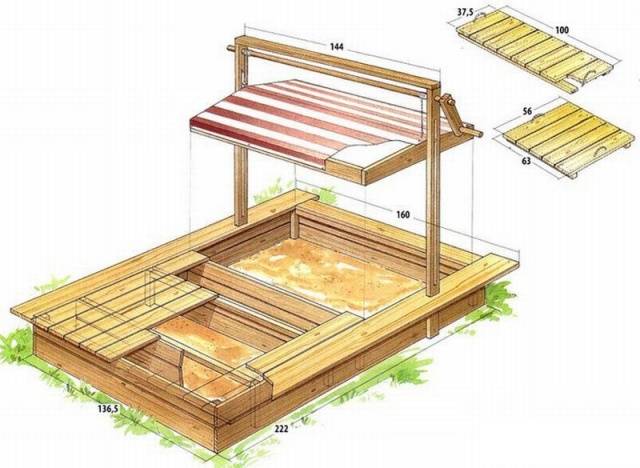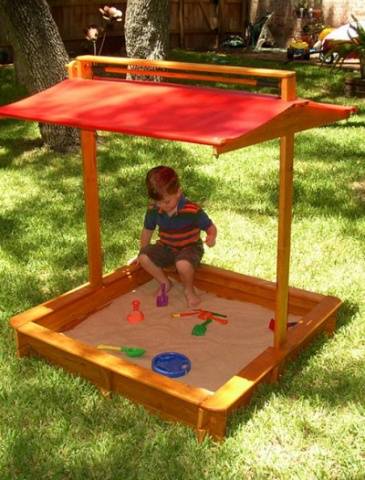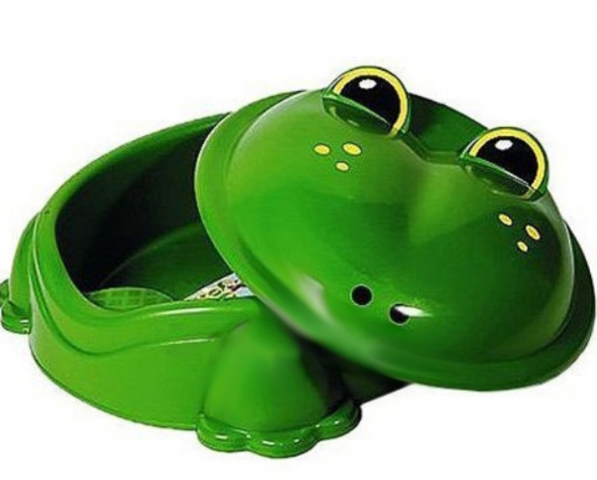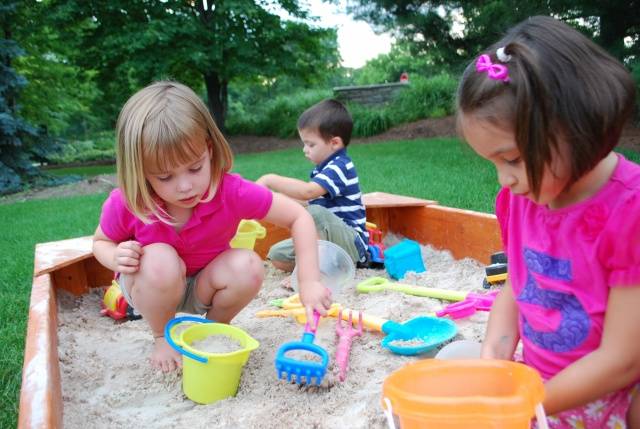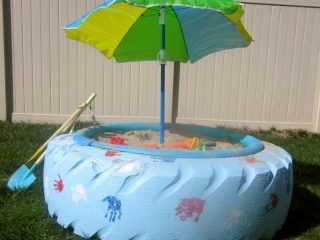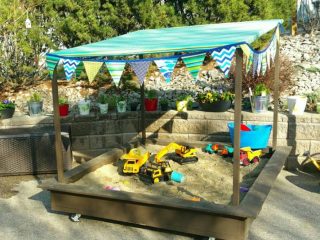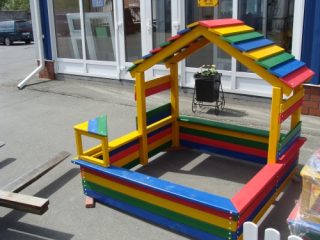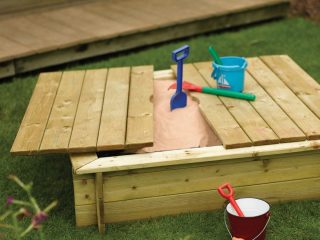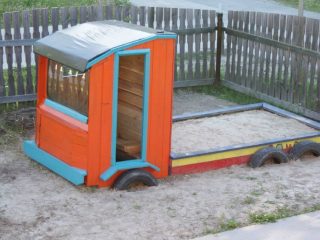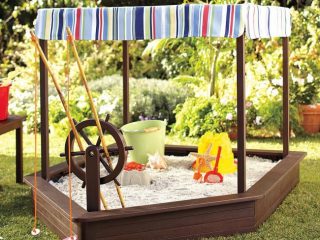Content
If there is a sandbox in the courtyard of the house or on a summer cottage, then the children will always find something to do, because the child’s imagination in playing with sand is absolutely unlimited. Toddlers and older children build castles, highways, and make Easter cakes. Caring parents can provide them with this opportunity by purchasing or independently building a sandbox. The design shape of this playground object may be different, however, for a summer residence, a children's sandbox with a lid is the best option, since an additional structural element will protect the sand from debris, dirt, the “adventures” of pets, and heavy rains. There are a huge number of options for such frames for sand with a lid, and each parent can independently decide what size and what materials the structure should be made of, as well as what original features it should have.
Do it yourself
There is nothing difficult about making a sandbox with your own hands. To do this, you just need to decide on its shape and the material that you plan to use. When choosing a material, it is necessary to take into account its durability and adaptability to outdoor conditions:
- The most popular material for creating structures is wood. It is easy to process, it is durable, environmentally friendly and affordable.
- If you decide to use plywood or sawdust boards (OSB) in the construction of the frame, then you need to take care of their moisture resistance, because the material without special treatment quickly loses its qualities in unprotected conditions. The advantage of materials made from shavings and sawdust is their ease of processing, which allows you to cut parts of a structure of any shape.
- The simplest option for creating a sandbox for children with your own hands is to install a frame from a car tire.
A sandbox element such as a lid can not only protect the sand, but also perform some other important functions. So, you can build a transforming sandbox, where the lid becomes a comfortable seat or canopy that protects from the sun while the baby is playing.
When you decide to create a children's sandbox with a lid for your dacha, you should not forget about its aesthetics and visual appeal. It is much more interesting for kids to play not just in a sandbox, but in a bright and original structure filled with sand. Creating interesting playground objects will not take much time and effort, but staying in them will bring a lot of pleasure to children.
Simple version with removable lid
The easiest option to make a sandbox at your dacha with your own hands is to install a machine wheel tire. This material is not particularly attractive, but with some effort you can create a fun, colorful sandbox out of it. To do this, you need to cut off the tire rim completely or partially on one side and paint the remaining part with multi-colored paints.As a cover to protect the sand in such a frame, you can use a piece of polyethylene, tarpaulin or plywood, as shown in the photo. Such a cover, of course, will not carry an additional functional load, but it will not require the expenditure of money and time.
Such sandboxes are very easy to make, however, their size will always be limited by the diameter of the wheel. At the same time, the advantage of such frames for sand is mobility, since if necessary, the structure is not at all difficult to move from one place to another.
Wooden sandbox using a simple method
Every parent can make a wooden sandbox with a regular hinged lid. The technology is quite simple and does not require any effort or time. We will try to describe in detail the stages of creating such a frame for sand:
- First you need to choose a location to install the sandbox. This should be a clearly visible place with a flat surface, possibly in the shade of tall trees, the crown of which will protect children from direct sunlight.
- The second stage of work should be marking the area and removing fertile soil under the entire surface of the future sandbox.
- You need to start assembling the structure by installing the bars in the four corners. To make it easier to drive them into the ground, you can sharpen the bases. When installing the bars, you need to ensure that the geometry of the frame is maintained, with a shutter speed of 900 at the corners of the building.
- After installing the main bars, you can begin installing the frame. To do this, along the perimeter of the sandbox, a board is nailed to the bars from the outside.It is worth noting that the lower side board of the frame should be slightly buried in the ground, which will prevent the sand from being washed away by rainwater.
- At the bottom of the sandbox along the entire perimeter, you need to lay a material that will allow water to pass through, but will not allow the sand to mix with the ground and prevent the germination of weeds. As such a material, you can use geotextiles or polyethylene (linoleum) with holes made for water drainage.
- A horizontally oriented board should be secured along the perimeter of the assembled structure. It will serve as a bench. In the corners of the sandbox you can also fix pieces of board rotated by 450.
- Hinges and a lid of two doors are already attached to the finished structure using self-tapping screws, as shown in the photo below. As a cover, you can use sheets of laminated, moisture-resistant plywood or boards nailed together.
You can modernize such a simple model of a homemade sandbox with the help of supports that will support the lid flaps when opening the sandbox. Children can sit on these lid flaps while playing or use them as tables. Supports on the lids can be made using bent pieces of reinforcement, knocked together wooden blocks, or the legs of an old cot. An example of such a functional sandbox with a lid can be seen in the photo below:
An ordinary sandbox, represented by a wooden frame made of beams, can be covered with a tarpaulin or moisture-resistant fabric, which during play will serve as a roof and protect the child from the sun's rays.To do this, in the frame of the wooden structure, you need to install bars in the corners on which the tarpaulin is fixed while the sandbox is open.
Thus, using one of the simple technologies given, you can create a sandbox with a lid with your own hands without any problems or financial costs. At the same time, the child will play in such a structure comfortably and interestingly, and most importantly, safely, because under the shelter the sand will always remain clean.
Complex multifunctional designs
A multifunctional sandbox with a lid, working on the transformer principle, can be made with your own hands, following the recommendations of experienced specialists. The most widespread are frames for sand, in which the lid rises up, becoming the roof of a sandbox, or folds to the sides, becoming comfortable benches for children.
Design with comfortable benches
To build such a sandbox, you will first need boards. Their thickness should be approximately 3.2 cm, width more than 12 cm. You can buy such a board up to 6 m long. A frame will be assembled from it, so after purchasing and processing, the board is cut into long pieces equal to the width and length of the sandbox, as a rule , the dimensions of the structure are 1.5x1.5 or 2x2 m. Also for construction you will need bars with a cross section of 5x5 cm and a length of 50 cm (4 pieces). The lid in this design will be bent using hinges (6-8 pieces). The assembly of such a sandbox with a lid is carried out using the following technology:
- The frame of the sandbox is assembled from planed, sanded and antiseptic-treated boards. Fasten the boards in the corners to the bars with self-tapping screws.The height of the frame should be short to the width of the board, for example, using a 12 cm board, the height of the frame will be 36 or 48 cm. To prevent sand from spilling into the cracks, a self-adhesive seal can be placed between the boards of the frame.
- Assembling the bench begins by installing two boards on the edge of the sandbox. They are fixed rigidly with self-tapping screws. The third and fourth boards are also attached rigidly to each other with shanks or bars on the inside, thereby making it possible to obtain a bench seat. It is attached to the second board using door hinges. The turning mechanism should “look” inside the sandbox.
- The back of the bench is also a rigid connection of two boards. They are attached to the seat using two more door hinges. 2-4 stop bars are fixed to the back side of the backrest, which will not allow the backrest to recline completely.
The assembly work of such a sandbox can be seen in the video:
A diagram of such a bench can be seen below. Having understood the drawing, you can understand that the construction of a transforming cover is not particularly difficult.
The transformable sandbox can be made in two versions: with two benches or with a bench and a table. To create a table, you need to fix two boards rigidly to the frame of the sandbox, and two more rigidly to each other, but movably in relation to the outer boards. Mobility is ensured by two door hinges.
By choosing the parameters of the sandbox and board, you will be able to create a correct, harmonious design.
By creating such a sandbox at their summer cottage, a parent will provide their child with the opportunity to play with convenience and comfort, showing their imagination and skills.
Drop-down canopy design
Such an original, multifunctional and easy-to-use sandbox can rarely be seen in summer cottages. This feature is associated with the complexity of creating the design and its novelty on the market.
The sandbox shown in the photo above is a regular wooden frame for sand, made using the technology already given above, a plastic lid and a device for raising and lowering it. It is worth noting that the lid itself can be made not only of plastic, but also of wood or moisture-resistant plywood.
The principle of operation of the lifting mechanism in this design is similar to that used in the construction of wells for lifting a bucket of water: when the handle on the side is rotated along the circumference of the rope, the rope or chain is wound onto the beam, thereby lifting the lid of the sandbox. What kind of mechanism can be created using the following technology:
- Vertical bars (2 pieces on opposite sides) must be securely fastened to the sandbox frame.
- Make holes in the lid in the place where the bars will “walk”, as well as holes for securing a rope or cord. In some schemes, the sandbox lid is not placed on the bars, but a hole is made in them along the entire height into which sliders attached to the lid are inserted.
- On the bars, 10 cm below the top point, make round holes and insert a shaft of slightly smaller diameter into them.
- At the exit from one hole, the round shaft must be stopped by inserting a pin into it or screwing in a screw with a bolt, so that it does not have the opportunity to move towards the center of the sandbox.On the other side, a handle consisting of a vertical and horizontal part is mounted on the shaft. An example of a twisting handle is clearly visible in the photo below.
- Ropes or ropes must be firmly fixed along the edges of the round shaft. When the handle rotates, the shaft will wind the rope around itself, thereby lifting the lid.
- You can fix the lid in the raised position by sliding the twisting handle into the hole made below on the block.
- To obtain high structural rigidity, a horizontal spacer must be secured to the top of the bars.
The photo above shows a whole play complex that combines a sandbox with a lid and boxes for storing toys. The photo clearly shows the lifting mechanism of the lid, which transforms into a reliable shelter from the sun while children are playing.
This sandbox construction scheme is quite complex, and not all masters can implement it. The detailed description and diagrams provided will allow, if desired, to understand the complex design and, having understood the principle of its operation, to bring the idea to life.
You can buy a ready-made sandbox
Today's market offers a wide range of sandboxes that you can buy for your dacha. This method of solving the problem of creating a playground is the simplest, but at the same time the most expensive. You can find various versions of sandboxes made of different materials on sale:
- small plastic sandboxes with a lid in the shape of a frog or turtle will cost the buyer about 2-2.5 thousand rubles;
- a wooden frame for sand with benches, made using the technology described above, can also be found on sale for 9-10 thousand rubles.
- A sandbox for a summer house with a canopy lid that goes down over the bars costs 17 thousand rubles.
Thus, it is much more profitable and convenient to make a sandbox for children at the dacha yourself. This will allow you not only to save money, but also to independently choose the best material, make your own improvements and adjustments to the design, and demonstrate to your family and friends that you care about children. The kids, in turn, will probably be satisfied and grateful for the painstaking work to create a unique sandbox, realizing that no one else has exactly the same.
